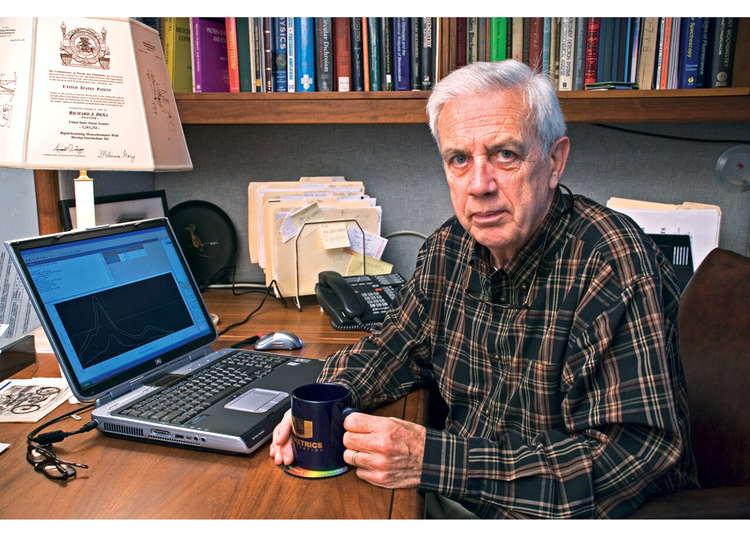The 2-Minute Rule for Circular Dichroism
The 2-Minute Rule for Circular Dichroism
Blog Article
9 Simple Techniques For Circularly Polarized Luminescence
Table of ContentsThe 10-Second Trick For SpectrophotometersThe 8-Minute Rule for SpectrophotometersThe smart Trick of Circularly Polarized Luminescence That Nobody is DiscussingWhat Does Uv/vis Do?The Ultimate Guide To Circularly Polarized Luminescence

Spectrophotometry is a tool that hinges on the quantitative analysis of molecules depending on how much light is absorbed by colored substances.
Uv/vis/nir Can Be Fun For Everyone
A spectrophotometer is commonly used for the measurement of transmittance or reflectance of options, transparent or opaque solids, such as polished glass, or gases. Although many biochemicals are colored, as in, they soak up noticeable light and therefore can be determined by colorimetric treatments, even colorless biochemicals can often be converted to colored compounds ideal for chromogenic color-forming reactions to yield substances ideal for colorimetric analysis.: 65 Nevertheless, they can also be created to measure the diffusivity on any of the listed light varieties that usually cover around 2002500 nm using different controls and calibrations.
An example of an experiment in which spectrophotometry is utilized is the decision of the stability constant of an option. A particular chemical response within a solution may occur in a forward and reverse direction, where reactants form items and items break down into reactants. At some point, this chemical reaction will reach a point of balance called a stability point.
Circularly Polarized Luminescence Can Be Fun For Everyone
The amount of light that passes through the solution is a sign of the concentration of particular chemicals that do not permit light to pass through. The absorption of light is due to the interaction of light with the electronic and vibrational modes of molecules. Each type of particle has an individual set of energy levels related to the makeup of its chemical bonds and nuclei and thus will absorb light of particular wavelengths, or energies, leading to distinct spectral homes.
They are commonly used in lots of industries consisting of semiconductors, laser and optical manufacturing, printing and forensic assessment, as well as in labs for the research study of chemical compounds. Spectrophotometry is often utilized in measurements of enzyme activities, decisions of protein concentrations, decisions of enzymatic kinetic constants, and measurements of ligand binding reactions.: 65 Ultimately, a spectrophotometer is able to identify, depending on the control or calibration, what compounds are present in a target and precisely how much through computations of observed wavelengths.
This would come as a service to the previously produced spectrophotometers which were unable to absorb the ultraviolet properly.
About Uv/vis/nir
It would be discovered that this did not give satisfactory results, therefore in Design B, there was a shift from a glass to a quartz prism which enabled for better absorbance outcomes - circularly polarized luminescence (https://www.abnewswire.com/companyname/olisclarity.com_129679.html#detail-tab). From there, Model C was born with a change to the wavelength resolution which ended up having three units of it produced
It irradiates the sample with polychromatic light which the sample takes in depending on its residential or commercial properties. Then it is sent back by grating the photodiode array which identifies the wavelength area of the spectrum. Ever since, the production and execution of spectrophotometry gadgets has actually increased profoundly and has actually ended up being one of the most innovative instruments of our time.

What Does Circular Dichroism Mean?
The grating can either be movable or fixed.
In such systems, the grating is repaired and the intensity of each wavelength of light is measured by a various detector in the variety. Additionally, most contemporary mid-infrared spectrophotometers use a Fourier change technique to acquire the spectral info - https://www.twitch.tv/olisclarity1/about. This technique is called Fourier change infrared spectroscopy. When making transmission measurements, the spectrophotometer quantitatively compares the portion of light that travels through a reference service and a test option, then electronically compares the strengths of the two signals and computes the portion of transmission of the sample compared to the reference requirement.

Report this page